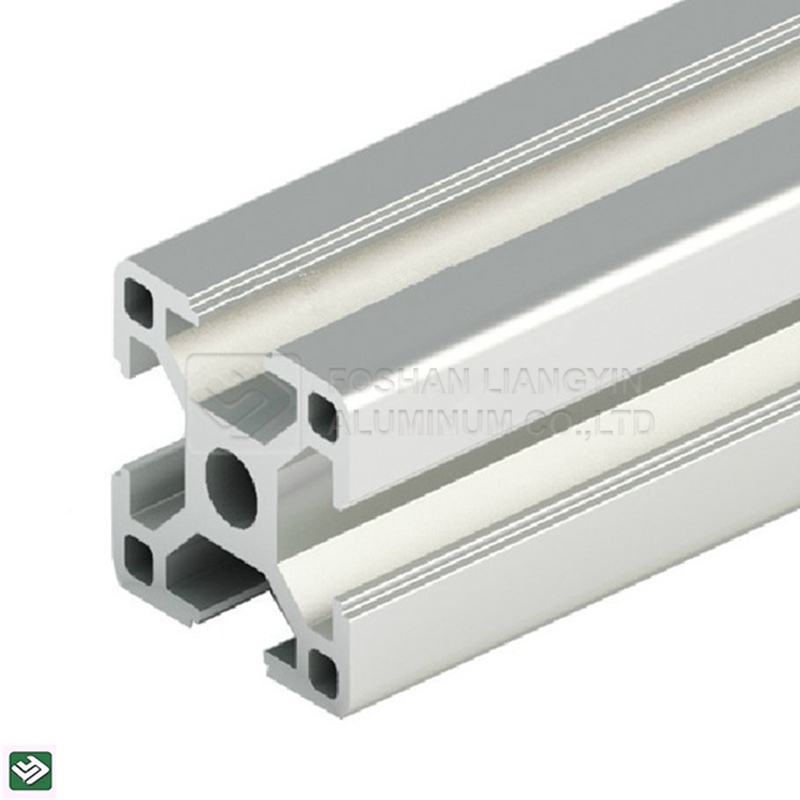Many people are curious about the forming process of extruded aluminum heatsink processing, and are curious about what kind of processing can make it become this way

Aluminum Die Casting Technology
In addition to aluminum extrusion technology, aluminum die-casting is also often used in the manufacturing process of heat dissipation. Aluminum ingots are melted into a liquid and filled into a metal model, and the heat sink is directly die-cast using a die-casting machine, which can be made into a variety of fins in three-dimensional shapes using the pressure method. The fins can be made into thin and dense fins to increase the cooling area, because the process is simple and widely used. Commonly used die-casting aluminum alloy for ADC12, due to die-casting molding performance, suitable for thin castings, but the thermal conductivity is poor (about 96W/mK), now the domestic AA1070 aluminum alloy material as a die-casting material, thermal conductivity up to about 200W/mK, good heat dissipation.
However, for AA1070 aluminum die-casting radiator, some of its own can not overcome the inherent defects:.
(1) die-casting surface rhyolite and excessive oxidation slag, which will reduce the heat transfer effect.
(2) Reduced thermal conductivity when internal shrinkage is high (K < 200W/m-K).
(3) Mold susceptible to erosion and shortened life.
(4) Poor formability, not suitable for thin castings.
(5) The material is soft and easy to change.
With the increasing CPU frequency, in order to achieve better heat dissipation, the use of die-casting process to produce extruded aluminum heatsink volume is increasing, which brings many problems to the installation of heat sinks, and this process produces a limited effective cooling area of the heat sink, in order to achieve better heat dissipation will inevitably improve the fan air volume, increasing the fan flow will generate more noise.
Aluminum extrusion technology
Aluminum extrusion technology simply put, aluminum ingot heated to about 520-540 ℃, under high pressure so that the aluminum flow through the slot with extrusion die, so that the radiator early embryo, and then the radiator on the embryo cutting, cutting the slot and other processing after we made the common radiator. Aluminum extrusion technology is easier to implement, the equipment cost is relatively low, and it is also widely used in the early low-end market. The commonly used aluminum extrusion material, AA6063, has good thermal conductivity (about 160-180 W/m-K) and processability. However, due to its own material limitations, the ratio of fin thickness to length cannot exceed 1:18, making it difficult to increase the cooling area in a limited space, so the cooling effect of aluminum heatsinks is poor and difficult to compete with today's rising high-frequency CPUs.
Flexible process
Flexible process by the first copper or aluminum plate, molding machine into a one-piece heatsink, and then use the puncture die will be fixed on the base plate, and then use high-frequency metal welding machine, and the processing base welded together, due to the continuous bonding process, suitable for thickness than the heatsink thick, and the overall shape of the heatsink, conducive to the continuity of thermal conductivity, heatsink thickness of only 0.1mm, can greatly reduce the material requirements, and the heat Absorption weight maximum heat transfer area. In order to achieve mass production and overcome when the interface impedance interface, the upper and lower layers are processed partly at the same time feeding, automation has been the process, the upper and lower layers joint mining high frequency welding, material fusion to prevent the interface impedance to establish high strength, closely spaced heat sink. Since the method is continuous, it can be mass produced and the heat transfer efficiency can be improved due to the significant reduction in weight and improved performance.
Forging process
The forging process is formed by heating the aluminum block to the descending point and using high pressure to fill the die. It has the advantage that the fin height can reach more than 50 mm and the thickness less than 1 mm, which can get the maximum heat dissipation area in the same volume, and the forging is easy to get good dimensional accuracy and surface finish. However, when forging, due to the phenomenon of neck shrinkage when cooling plastic rheology, the heat sink is prone to uneven thickness and height, which in turn affects the heat dissipation efficiency. And because of the high cost of equipment and molds, unless a large number of production or the cost is too high.
Copyright:@2020-2021
Comments Please sign in or sign up to post.
0
0 of 500 characters used